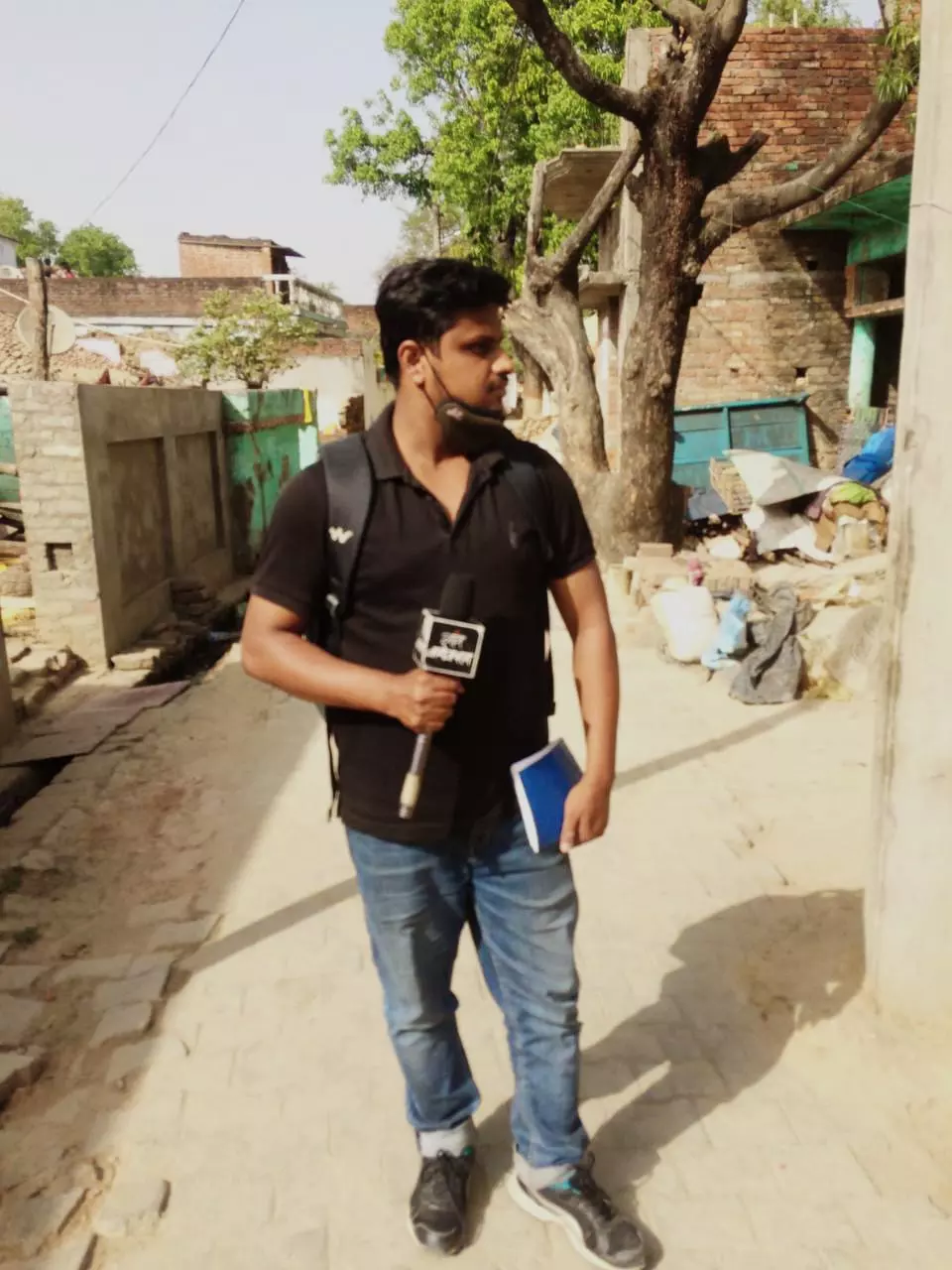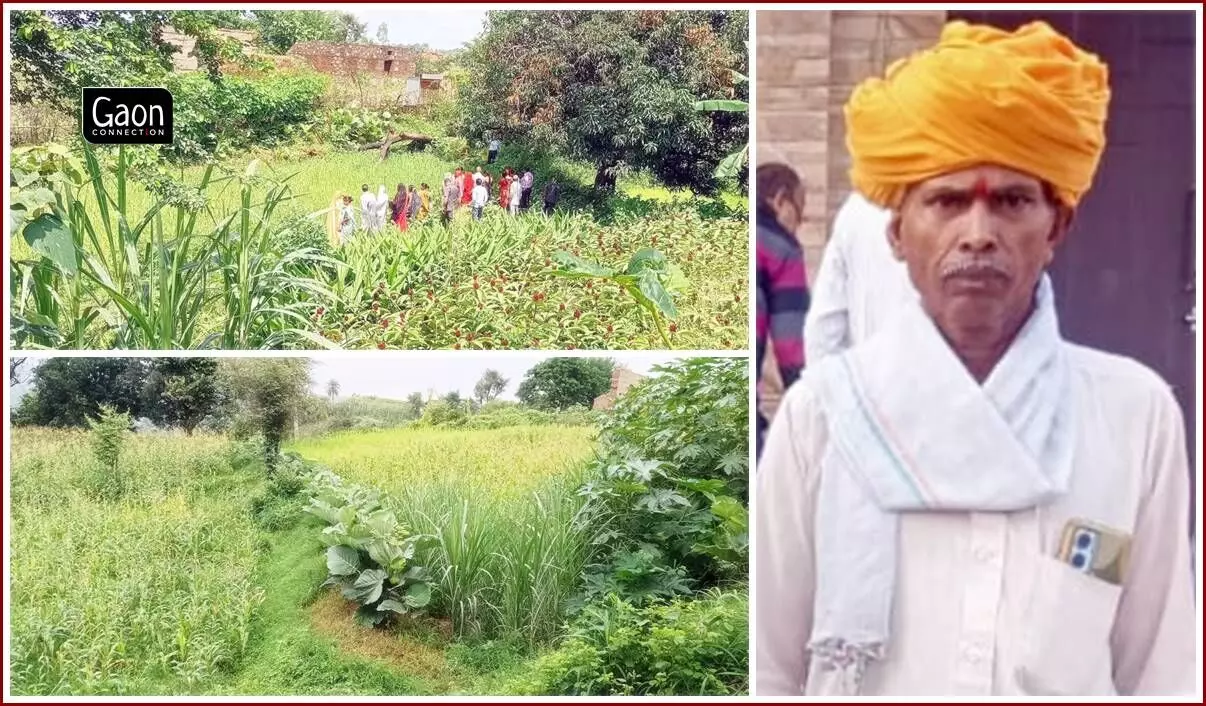Nursery Times With A Bhil Tribal Healer in Udaipur
Since 2014, Shantilal Khardi has been cultivating more than 200 medicinal roots, shrubs and herbs on his 30 bighas of land in Bhamti village in Rajasthan.
 Pratyaksh Srivastava 29 Dec 2023 6:07 AM GMT
Pratyaksh Srivastava 29 Dec 2023 6:07 AM GMT

The traditional healers from Udaipur and other districts of Rajasthan look up to Kharadi. Photos by Arrangement
Jamshedpur, Jharkhand
While Shantilal Kharadi is by profession a carpenter and a well digger, he is also someone to whom people in Bhamti village in Udaipur district, Rajasthan, turn to when they are sick.
“I accompanied my father, who was a tribal healer, whenever he went to the forests to collect medicinal plants and herbs. From him I learnt about our traditional healing practices of using nature’s produce to treat ailments,” the 58-year-old told Gaon Connection.
“I have been treating villagers for health problems like thyroid, allergies, diabetes, and stomach issues,” said Kharadi who belongs to the Bhil adivasi community.
He hasn’t stopped at just treating people using medicinal plants and herbs but is also a conservationist. Since 2014, Kharadi has been cultivating rare medicinal plants on his 30 bighas (about seven hectares) of land. He grows and preserves more than 200 kinds of herbs, such as Kevkand (Costus Speciousus), Hastikand (Leea macrophylla), Aparkara (Anacyclus pyrethrum), Kala Dhatura (Datura inoxia), Mirsyakand (Pachyrhizus erosus), Vidarikand (Pueraria tuberosa) and Kalyari (Gloriosa Superba).
Also Read: A Road Map for Traditional Healers
The setting up of these nurseries in their own backyards provides healers a dependable and regular supply of essential medicines which they use to treat their patients.
This has made not just his own life as a healer easier, but also that of other healers in the region who source these rare plants from Kharadi.
“While working as a tribal healer, I realised that going into the forest every time I needed to prepare medicines was getting difficult and impractical, so I decided to grow them myself,” said Kharadi.
“I decided to go deep inside the forest and find the rare plants that I then brought back and planted on my land,” he said.
Also Read: Walking the Healing Path
No wonder that the traditional healers from Udaipur and other districts of Rajasthan look up to Kharadi.
“Kharadi’s nursery of medicinal plants has ensured that healers like me don’t quit our traditional occupation,” said Hazari Singh, a tribal healer from Banswara district in Rajasthan.
Last month, in November, Kharadi travelled to Jamshedpur in Jharkhand to participate in the annual tribal conclave, Samvaad, organised by Tata Steel Foundation. He spoke at length about his experience of growing medicinal plants.
In 2019, through Samvaad, the Tata Steel Foundation formed a collective called the National Tribal Traditional Healers Association of India. It has members from almost all the states of the country. These healers are not only documenting their traditional healing practices but are also identifying new tribal healers and introducing them to the goals and objectives of the collective.
“The vision of this network is to work with the healers and promote documentation of healing practices and build a community level repository of their knowledge,” Sourav Roy, the chief executive officer of TSF told Gaon Connection.
Traditional healing is an important yet often underestimated element of healthcare. According to the World Health Organization, it is estimated that about 80 per cent of the ailing population in developing countries depends on traditional healing for its primary healthcare needs.
Though there is no definite data on the number of traditional healers in India, available information points towards a figure of anywhere between half a million and two million.
In Udaipur, a local non-profit called Jan Jagran Samiti has been training tribal health practitioners like Kharadi to set up nurseries for medicinal plants. It has been working with tribal healers since 1995.
Ram Kishor Sharma, a registered Ayurvedic doctor who works with the non-profit in Udaipur, said: “I have myself trained at least 100 such tribal healers so far. They are highly skilled and are custodians of the medicinal secrets of these plants found in the forests of Udaipur and Banswara region.”
According to him, the setting up of these nurseries in their own backyards provides healers a dependable and regular supply of essential medicines which they use to treat their patients.
Speaking about the difference between Ayurveda and healing traditions of tribal communities, Sharma said, “In Ayurveda, we have proponents like Sushruta and Charaka whose teachings have been documented in ancient scrolls and scriptures. But among the adivasi communities, there is no written record of their knowledge. The information is all word of mouth, transferred from one generation to another.”
Also Read: A Chakma Youth Is Preserving His Tribe’s Healing Practices and Its Indigenous Language
This lack of written records made it difficult for the government to accord recognition to them. “There are a few institutions that issue certificates to the tribal healers but they are not on par with a medical degree like MBBS, BAHS, or BAMS,” Sharma added.
Not having written records of the medicinal plants and their curative properties is a big impediment, said Kharadi.
“We are trying to document our heritage but it is still nowhere close to Ayurveda when it comes to having an established body of work that can standardise our healing practice,” he said.
Since 2014, Kharadi has been cultivating rare medicinal plants on his 30 bighas (about seven hectares) of land.
The lack of documentation results in lack of a formal recognition of their healing practices, on the lines of Ayurveda, Homeopathy, and Unani medicinal practices, he added.
Dr Vijayalakshmi Asthana, Principal Scientist, Council of Scientific and Industrial Research-Traditional Knowledge Digital Library (CSIR-TKDL), addressed the gathering of healers at Samvaad and spoke at length about documentation. She said how belief and faith played a big part in traditional healing and they could not be ignored. She suggested that, while traditional healing could not replace conventional medicine, it could definitely support and supplement it.
“I would say that they could be complementary and integrative. They have a definite future in health research,” she told Gaon Connection.
In the course of her talk, Dr Asthana underlined the importance of scientific validation. And for that to happen, documenting the process is a must, she said.
And, she elaborated on how that documentation should be done with the consent of the healer, and he or she should be clearly acknowledged and compensated.
The healers were all ears as she walked them through how to go about the preliminary documentation at their level. A good beginning, she said, would be video recording or photographing the plants, writing down their local names, finding out their scientific names, how the particular plant was used as medicine, its dosage and so on.
#Rajasthan #TribalHealers #Herbs #Bhil
More Stories




